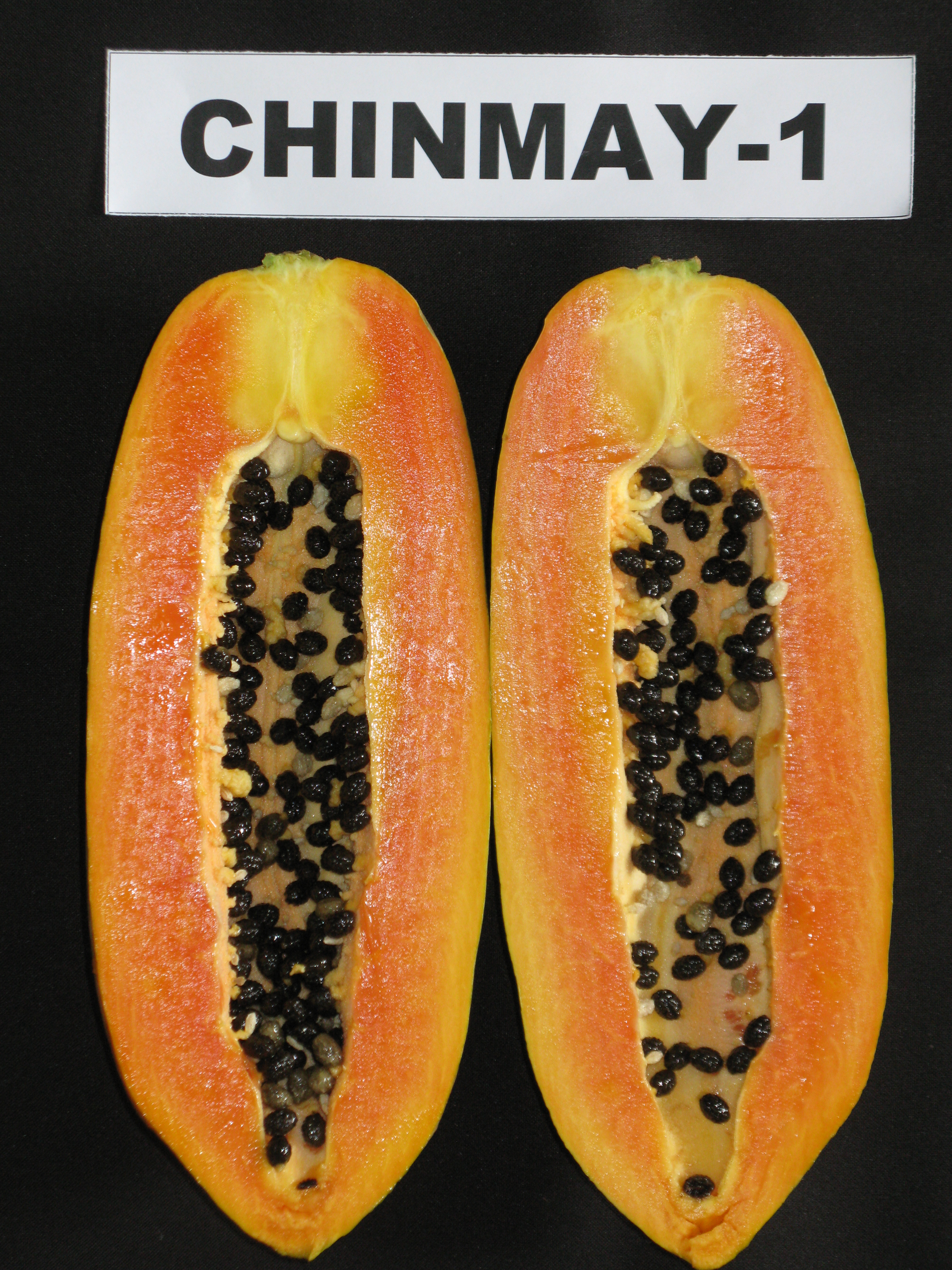
Crop: Papaya
Scientific name : Carica papaya
Common / Local Name : Papaya/Papeta/Paw paw
Papaya originated from southern Mexico,Central America, and northern South America. It is now cultivated in most tropical countries. It is highly sensitive to frost and water logging. In India, papaya is cultivated in states like Orissa, West bengal, Kerala, Karnataka, Madhya Pradesh ,Tamil Nadu and Gujarat.It is a potential fruit crop for commercial cultivation in Goa. Of late, few progressive farmers have started showing interest in cultivation of local and released varieties of papaya.
Field should be ploughed thoroughly and pits of size 60 cu.cm should be dug out. After weathering, pits should be filled with top dug out soil along with 10kg FYM + 1kg Neem cake + 5 kg Rock phosphate + 1.5 kg MOP + 20-25 g of Trichoderma per pit.
Papaya is propagated normally through seeds.
Seed rate: 500g/ha
Seeds should be treated with PGPR before sowing
Nursery bags should be filled with garden soil, FYM and sand in 1:1:1 ratio. Addirion of Trichoderma @2-3 g/bag will be beneficial.
3-4 seeds should be sown per bag for dioecious varieties
2-3 seeds per bag for gynodioecious varieties
Normal spacing: 1.8 x 1.8 m
High density planting1.3m x1.3m
For dwarf variety: 1.2 x 1.2 mSeedlings of 35-40 days age are transplanted into pits. Proper staking with bamboo poles is essential to avoid lodging. Mulching of basin and thatching with coconut leaves are essential practices to be followed.
Co-1 to Co-8, Pusa Majesty, Pusa Delicious, Pusa Nanha, Pusa Dwarf, Pusa Giant, Surya, Arka Prabhat, Coorge Honey Dew, Washington, Solo varieties, Ranchi, RCTP-1and Red Lady are some varieties of papaya. Under Goa conditions, Red Lady and RCTP-1 perform well.
 Chinmay 1
Chinmay 1
 RCTP 1
RCTP 1
 Pusa Nanha
Pusa Nanha
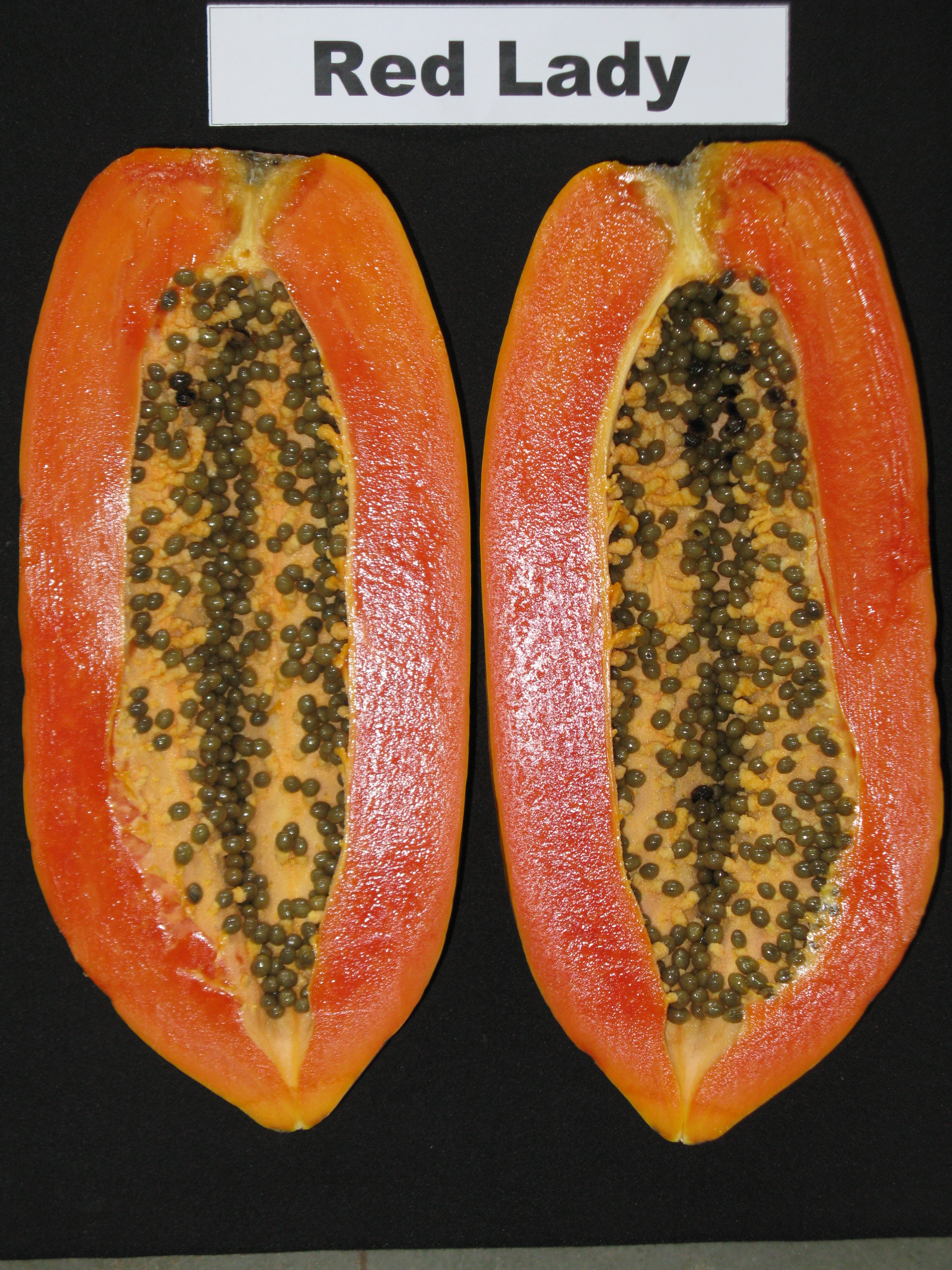 Red Lady
Red Lady
 CO-7
CO-7
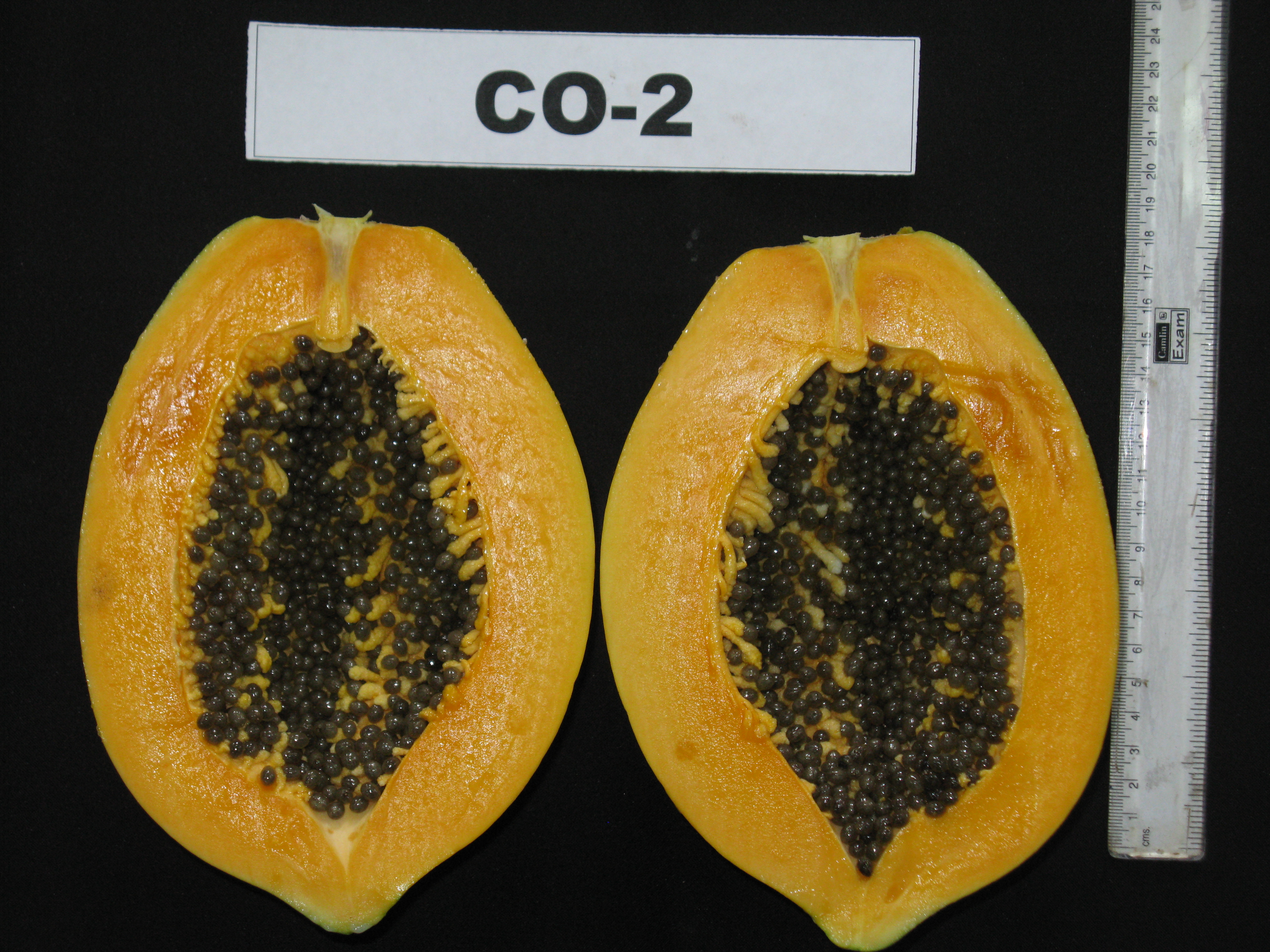 CO-2
CO-2
After a month of planting, 5 kg 19 : 19: 19 and 2.5 kg urea / ha need to be applied through drip fertigation.
After 15 days the same dose should be repeated.
After two months of planting basin should be made around the plant and fertiliser at the rate 250 kg DAP, 500 kg neem cake and 188 kg urea/ha should be applied.
After 3 months (250 kg DAP + 500 kg Neem cake + 750 kg MOP + 25 kg micronutrients mixture) should be added.
From 4th month to 6th month drip fertigation was practised as follows:
(a) At the beginning of 4th month 12 : 61: 0 �?30 kg /ha
(b) After 15 days 30 kg/ha 0 : 0 : 50 mixed Fertiliser
(c) 15 days after that, 30 kg/ ha 13 : 0: 45
(d) 6th month 30 kg/ha 0 : 0 : 50
(e) 15 days after that 30 kg / ha 12 : 61 : 0
(f) At 7th month again 250 kg DAP + 188kg MOP + 25 kg micronutrients + 37.5 kg S/ha should be applied on ring.
Foliar spray
Spray zinc sulphate (0.5%), ferrous sulphate (0.2%), copper sulphate (0.2%) and borax (0.1%) at 3, 5 and 7 th month after planting.
May: every day 2 hrs drip irrigation.
June-Oct: Monsoons
Nov-Mar: Once in 4 days for 2 hrs
April: once in two days for 3 hrs
Weeding as and when required to keep field clean
Sex expression and thinning: In dioecious varieties, male and female plants segregate in 1:1 ratio. Retention of one male plant for 10-12 female plants is sufficient. Other male plants should be removed. Male plants are precocious in flowering and can be easily identified by the long and pendulous flowering stalks.
In gynodioecious varieties, one plant should be maintained per pit.
Mealy bugs
1. Stem rot/ Foot rot
Causal organism: Pythium aphanidermatum
Symptoms
The first symptom is the appearance of water soaked patches on the stem at the ground level,these patches enlarge and girdle the entire base of the stem.
The infected tissue becomes dark brown or black due to rotting.
The terminal leaves droop, wilt, turn yellow and fall down.
The entire plant topples over and dies because of the disintegration of the parenchymatous tissues of the stem.
The internal tissues look like a honey comb.
The stem rot is commonly seen in two to three year old plant.
The pathogen also incites damping off of seedlings in the nursery bed.
The seedlings raised in the infested soil may carry the disease.
The pathogen inhabits in the soil and the fungus persists on the papaya residues left in the soil.
Management
Uproot and burn the badly damaged plants.
Apply Trichoderma (50g/plant) mixed in well decomposed FYM around the root gone at the time of planting.
Drench copper oxychloride (0.2%) or Bordeaux mixture(1%) @ 2-3 lites/ plant. Repeat the drenching after one month.
Avoid water logging by providing good drainage.
2. Ring Spot Virus
Causal organism: Papaya ring spot virus (PRSV)

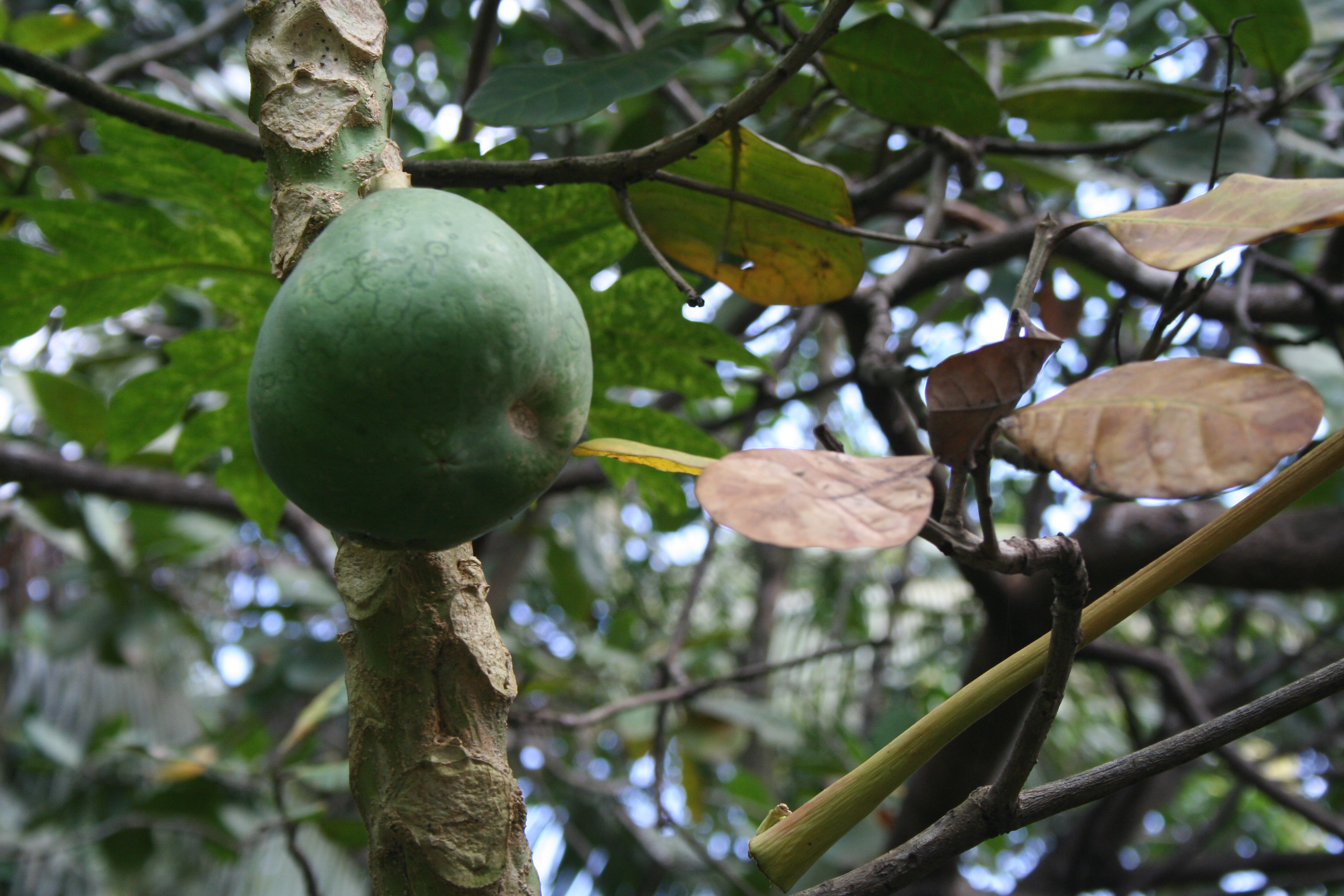

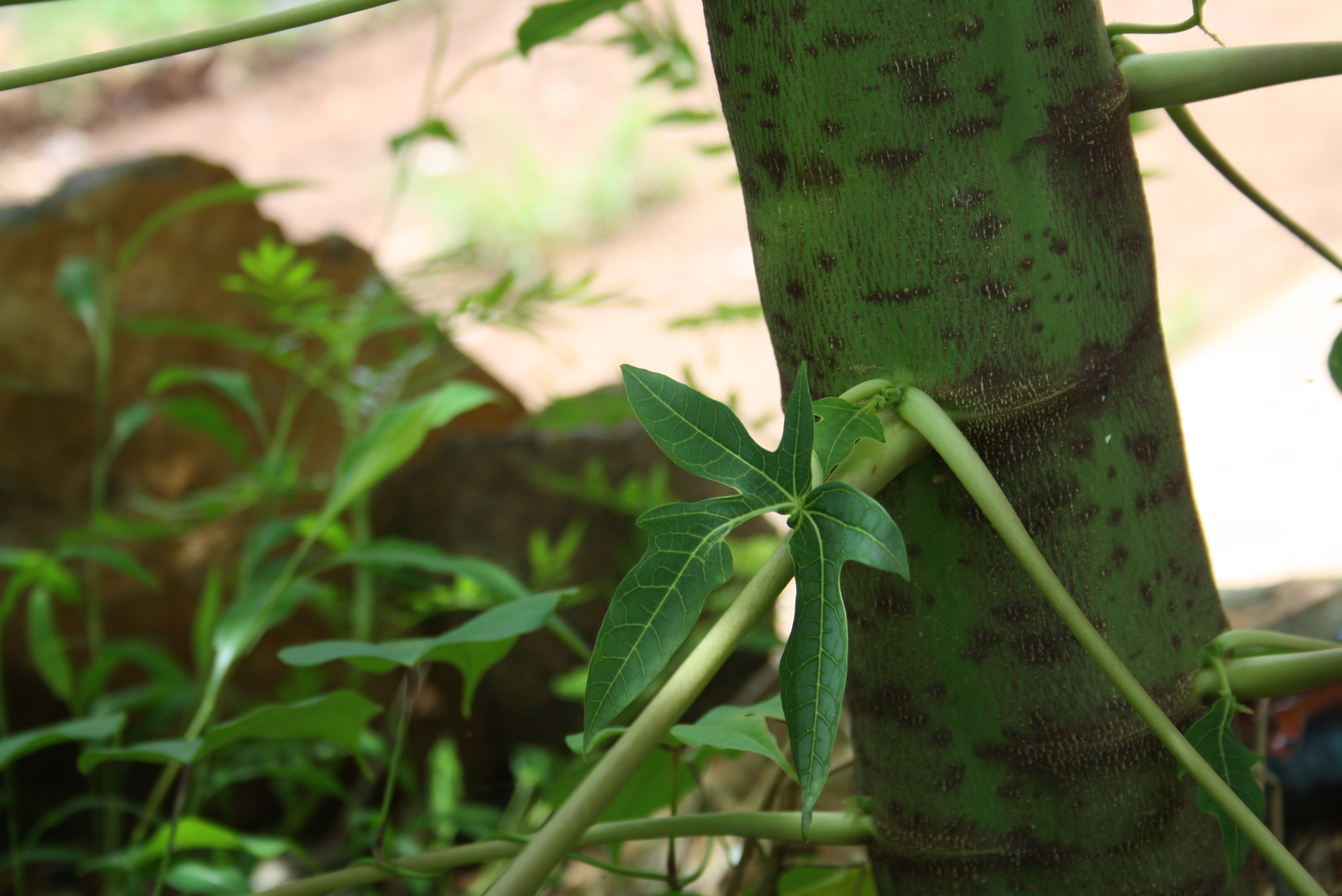

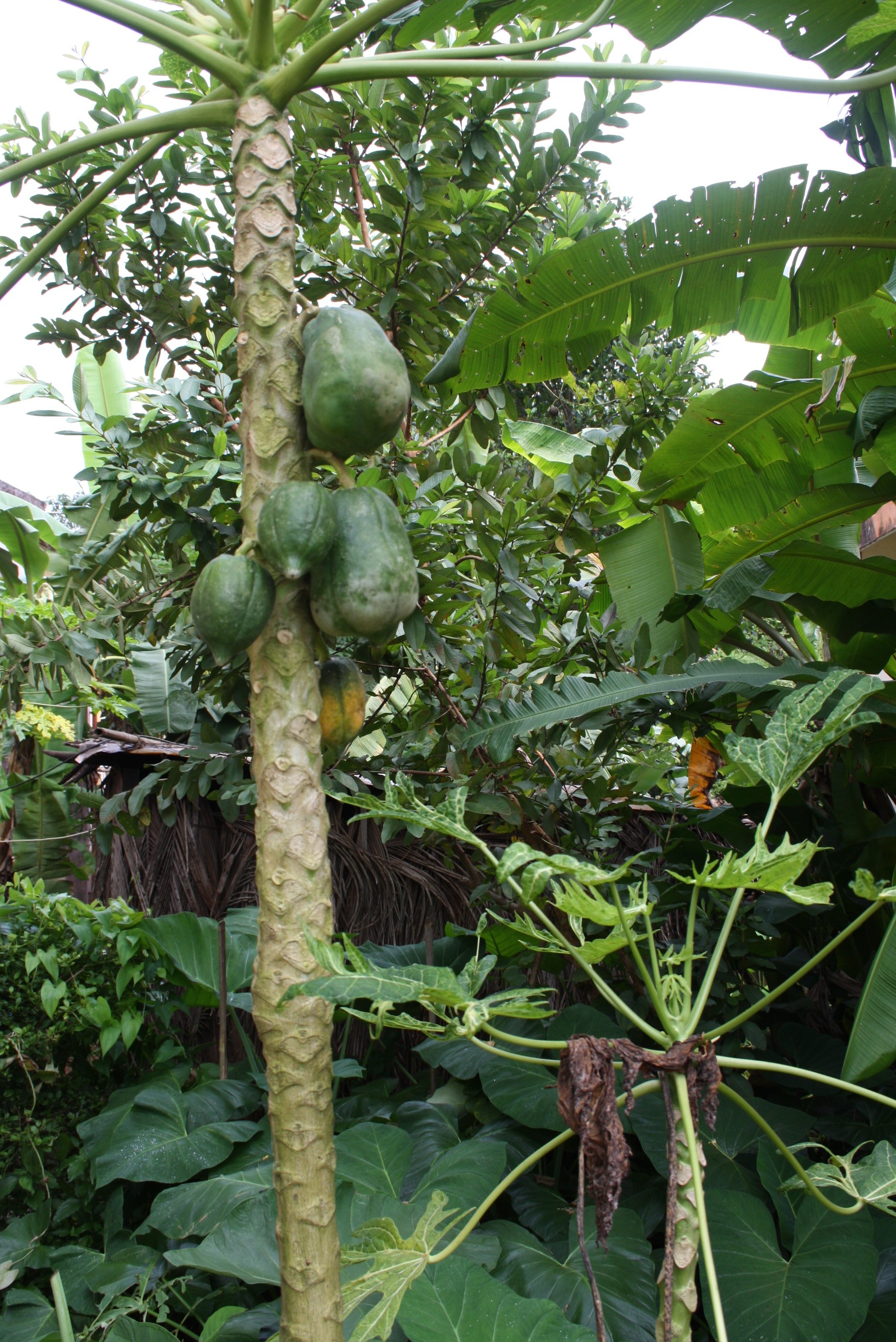
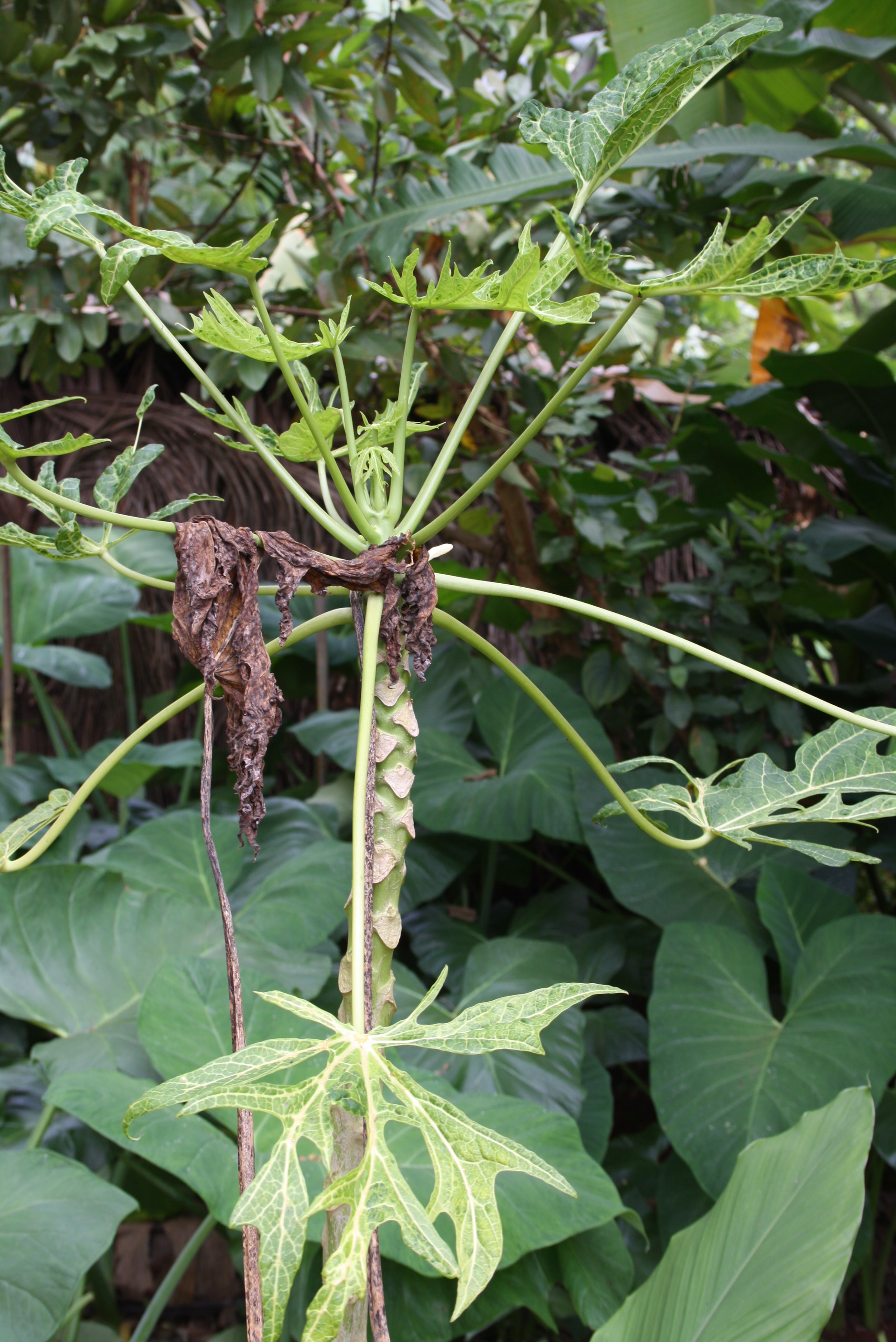
Symptoms
- The characteristic symptoms include vein clearing puckering or bulging of the leaf tissue between the secondary veins and veinlets on the upper surface of the terminal leaves.
- The margins and the distal parts of the young leaves may roll downwards and inwards.
- The most characteristic symptom is production of ring spots on fruit of infected papaya.
- The virus induces mosaic, mottling, dark green blisters, necrosis of chlorotic areas, leaf distortion resulting in shoe string symptoms followed by stunting of the plants.
- Mosaic or mottle symptoms, dark green spots and oily or water soaked streaks are seen on stems of young plants.
- The fruits are smaller, deeply lobed lop-sided and have circular concentric rings.
- These disease is transmitted by aphids
Management
- Raise papaya nursery under insect proof net to avoid early infection of seedlings.
- Rouging must be followed right from the seedling stage. Infected plants should be uprooted and burnt.
- Rows of barrier crops like maize and sorgum should be raised along the borders to prevent horizontal movement of the aphids.
- Avoid cultivation of cucurbits in and around papaya orchads, which are also a host of PRSV.
- Aphid control: application of carbofuran (1kg a.i/ha) in the nursery bed at the time of sowing seeds followed by foliar sprays of phosphamidon (0.05%) at 10 days interval from 15-20 days after sowing.
3. Tree death
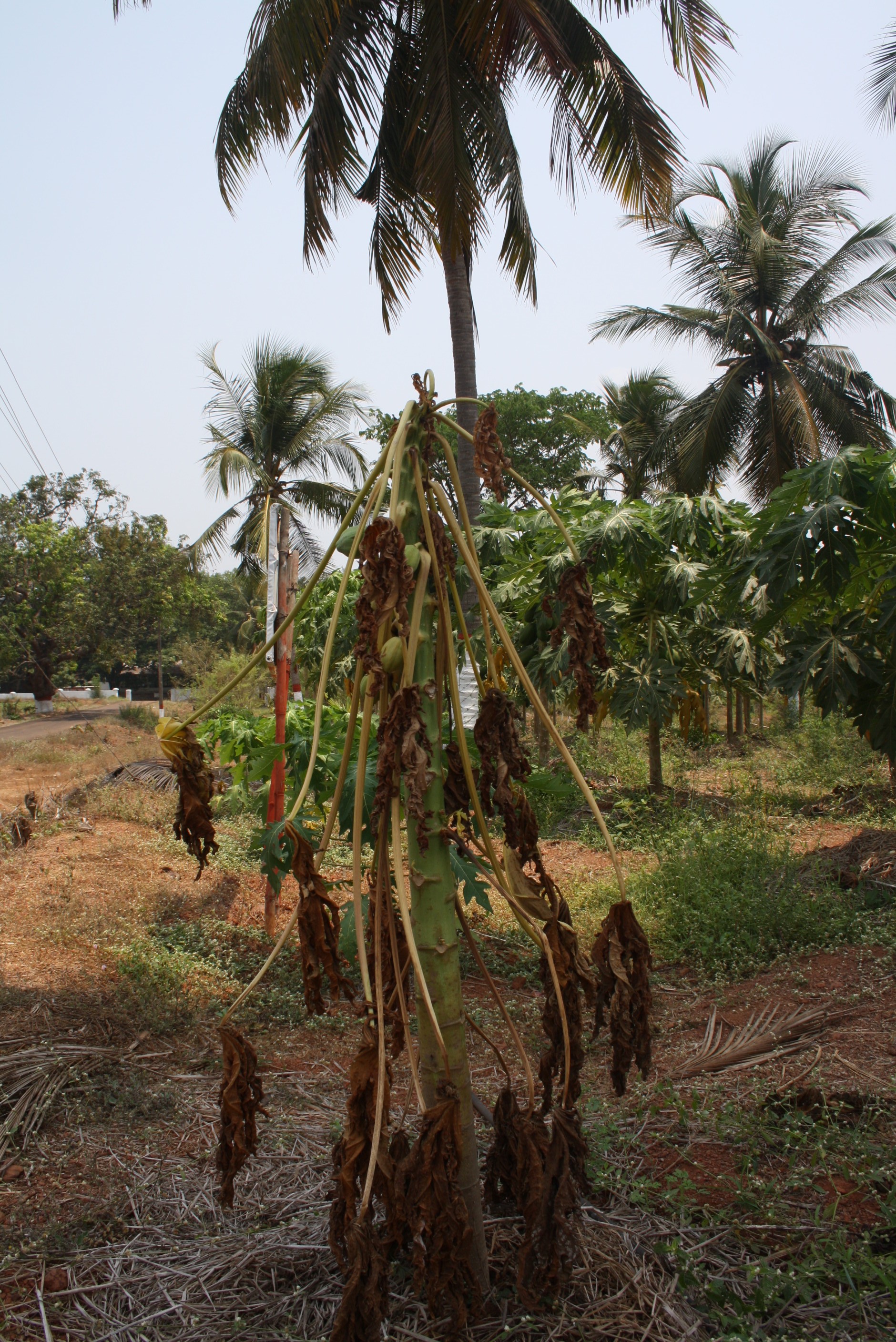

One tree can yield on an average 100 fruits, each weighing 1-3 kg based on variety. After 2½ years the papaya plants should be removed and some other suitable crop to be grown and then again papaya plantation can be taken up in the same land.
Jam, Tooti fruit etc.
Input availability |
Address/Contact details |
| Seeds | Seeds of released varieties are available in Research Stations /Universities. Seeds of Red Lady are available with dealers in Pune/ Belgaum |
Fertilizers |
For detailed list kindly click here |
Pesticides |
For detailed list kindly click here |
| Machineries | Goa Bagayatdar Stores |
|